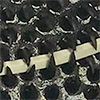Sep 15, 2022 (Nanowerk News) Strong alternating magnetic fields can be used to generate a new type of spin wave that was previously just theoretically predicted. This was achieved for the first time by a team of physicists from Martin Luther University Halle-Wittenberg (MLU). They report on their work in...
Scientists teach a robot when to have a sense of humor
Sep 15, 2022 (Nanowerk News) No one can really agree on what makes each of us laugh, so designing an artificial intelligence (AI) system with a sense of humor is enormously challenging. Researchers at Kyoto University laughed off the challenge by developing an AI that appropriately detects and responds to...
Hydrodynamic electrons seen to break a fundamental limit
Sep 14, 2022 (Nanowerk News) A new study from the Weizmann Institute of Science in collaboration with Manchester University and UC Irvine shows that an electronic fluid can flow through materials without any electrical resistance, thereby perfectly eliminating a fundamental source of resistance that forms the ultimate limit for ballistic...
Breakthrough reported in machine learning-enhanced quantum chemistry
Sep 14, 2022 (Nanowerk News) The equations of quantum mechanics provide a roadmap to predicting the properties of chemicals starting from basic scientific theories. However, these equations quickly become too expensive in terms of computer time and power when used to predict behavior in large systems. Machine learning offers a...
Robots that recognize and express intentions
Sep 14, 2022 (Nanowerk News) The digital and physical worlds are becoming more and more populated by intelligent computer programmes called agents. Agents have the potential to intelligently automate many daily tasks such as maintaining an agenda, driving, interacting with a phone or computer, and many more. However, there are...
Tiny, caterpillar-like soft robot folds, rolls, grabs and degrades (w/video)
Sep 14, 2022 (Nanowerk News) When you hear the term “robot,” you might think of complicated machinery working in factories or roving on other planets. But “millirobots” might change that. They’re robots about as wide as a finger that someday could deliver drugs or perform minimally invasive surgery. Now, researchers...
A nanoreactor to precisely control catalytic reactions
Sep 14, 2022 (Nanowerk News) Various chemical reactions occur one after another in cells, and life is maintained as each step of the reaction is regulated without error. Recently, a Korean research team has developed a dual-catalyst system that can precisely control catalytic reactions like cells. A POSTECH research team...
Fuel from a greenhouse gas made with single gold atoms
Sep 14, 2022 (Nanowerk News) The photocatalytic conversion of CO2 occurs through a series of processes in which electrons are transferred. This can result in various products, including carbon monoxide (CO), methanol (CH3OH), methane (CH4), and other hydrocarbons. Eight electrons must be transferred on the way from CO2 to CH4—...
new evidence of baby planet in the making
Sep 14, 2022 (Nanowerk News) Astronomers agree that planets are born in protoplanetary disks — rings of dust and gas that surround young, newborn stars. While hundreds of these disks have been spotted throughout the universe, observations of actual planetary birth and formation have proved difficult within these environments. Now,...
Making and breaking of chemical bonds in single nanoconfined molecules
Sep 14, 2022 (Nanowerk News) Researchers around the world are working to develop efficient materials to convert CO2 into usable chemical substances – work that is particularly pressing in view of global warming. A team from the University of Göttingen, Germany, and the Ulsan National Institute for Science, South Korea,...










